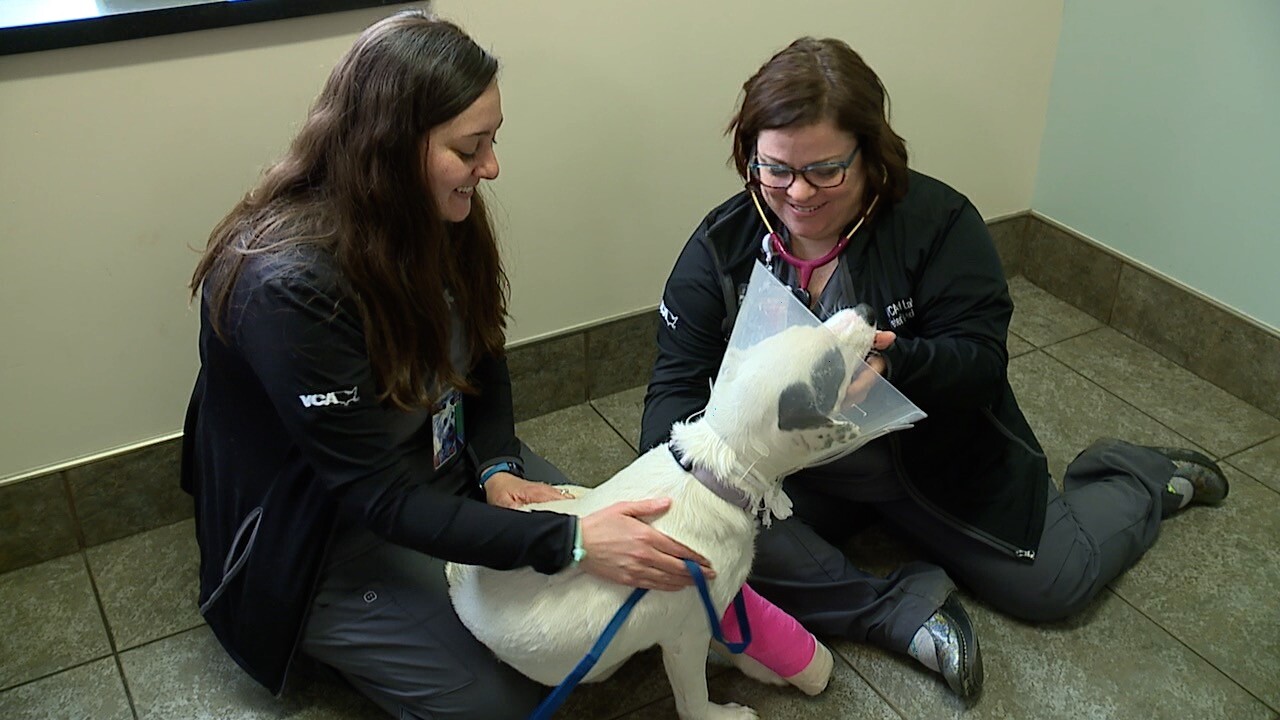WARRENSVILLE HEIGHTS, Ohio — Northeast Ohio veterinary clinics are facing the compounded challenge of low staffing and increased demand for care. It’s a similar issue at clinics nationwide, leading some researchers to believe if trends continue, an estimated 75 million American pets could be without healthcare by 2030.
“We're no different than basically every other profession. And it’s no different in Ohio than it is across the country,” said Jack Advent, the executive director of the Ohio Veterinary Medical Association (OVMA).
According to a national healthcare retention report from the American Animal Hospital Association, the turnover rate for veterinarians is twice as high as that of physicians. The data also found veterinarian technicians have the highest turnover rate of any healthcare position.
“There are a lot of struggles in the field that people might not realize,” explained Bethany Rohrer, the specialty technician supervisor at the VCA Great Lakes emergency clinic in Warrensville Heights. “They think, ‘Oh you get to play with puppies and kitties all the time.’ That is certainly part of it. And even when we’re dealing with more critical cases, those are rewarding as well. But they take a mental and physical toll.”
Rohrer and Advent both said veterinary careers attract individuals with passion for helping animals and animal owners. But high stress, increased workload and low pay could be driving some out of the profession.
“I graduated in 2000 from tech school. There were about 23 people in my graduating class. There are only 6 or 7 of them that are still in the field,” Rohrer said.
She explained the level of training and expertise needed to become a licensed vet tech in Ohio, as well as the demands of the job, are comparable to what’s required of human healthcare professionals.
“An RVT, registered vet technician, is an associate degree, same as an RN, a nurse,” she said. “But our salaries are about half of what a nurse for humans would make.”
Longtime frustrations, like pay disparity, have been compounded by the more recent stress of increased demand for services since the beginning of the COVID-19 pandemic. Analytics company VetSuccess found the average number of appointments booked at U.S. vet clinics climbed by 4.5% from 2019 to 2020. The following year was marked by another 6.5% increase in appointments.
“People were at home watching their pets and saying, ‘Huh… I wonder how long they’ve been doing that. That’s weird.’ And maybe [seeing] things they hadn’t noticed before,” Rohrer said of the beginning of the pandemic.
COVID-19 also forced some non-emergency vet clinics to temporarily shut their doors. During that period, Rohrer said her clinic was inundated with pet owners seeking non-emergency treatment and some customers had to wait more than 6 hours on occasion.
“Everything ended up coming to the emergency centers, whether it be a torn toenail or an ear infection, things we typically don’t think of as emergencies,” she said. “But because their general practices were closed, they had to come into the emergency room and we had to take care of them.”
Researchers from Mars Veterinary Health estimate 41,000 more veterinarians will need to enter the workforce over the next ten years to meet the projected healthcare needs of U.S. pets in 2030. An average of 2,500-2,600 graduate from veterinary programs each year, which would leave a 15,000 veterinarian shortage by the target date. By that estimation, researchers said the gap in available vets could leave 75 million U.S. pets without care.
In addition to a shortage of veterinarians and vet technicians, Advent said many clinics are currently experiencing a lack of support staff.
“Even if you may feel your clinic has enough veterinarians, if you can’t get the people to help you do what you need to do, you can’t work at an optimal level,” he explained.
Rohrer said financial assistance to help train future veterinary technicians and mental health support for current staff are helping address recruitment and retention. She hopes to see more investment in the passion she and others have for the profession.
“I tell people all the time I’ve been doing this for 25 years and I still look forward to coming to work everyday,” she said.




